Measuring and Mapping a Heatwave
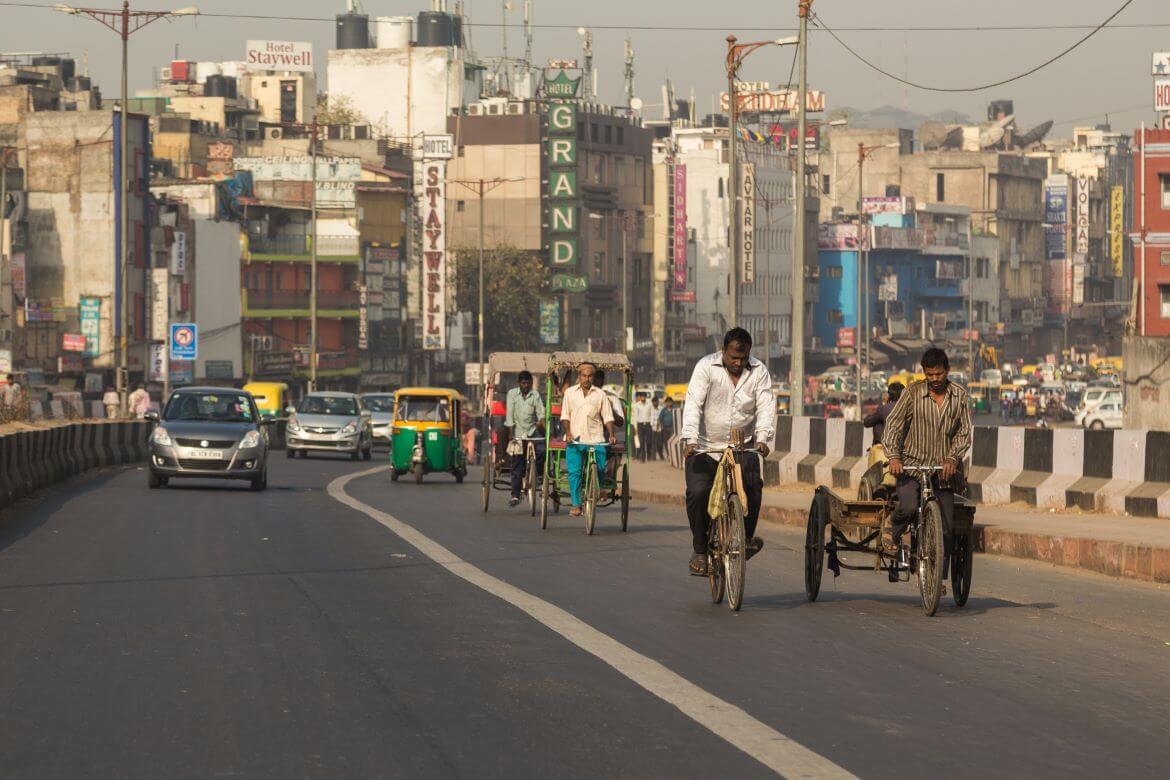
This year India witnessed an early intense heatwave where around a billion people were exposed to temperatures more than 40 degrees C in the month of April itself. But heatwaves are so much more dynamic and complex that traditional methods of reporting them, purely based on absolute air temperatures, might be insufficient. Heat has a dynamism spatially, temporally, and in its interaction with materials. Hence its measurement must also be dynamic. And not just the heatwave but its effects have several dimensions as well, with respect to human health, economic activity etc. It is, therefore, necessary while measuring a heatwave to use various metrics, indices, and methodologies to get better insights into the spatiotemporal nature of heat.
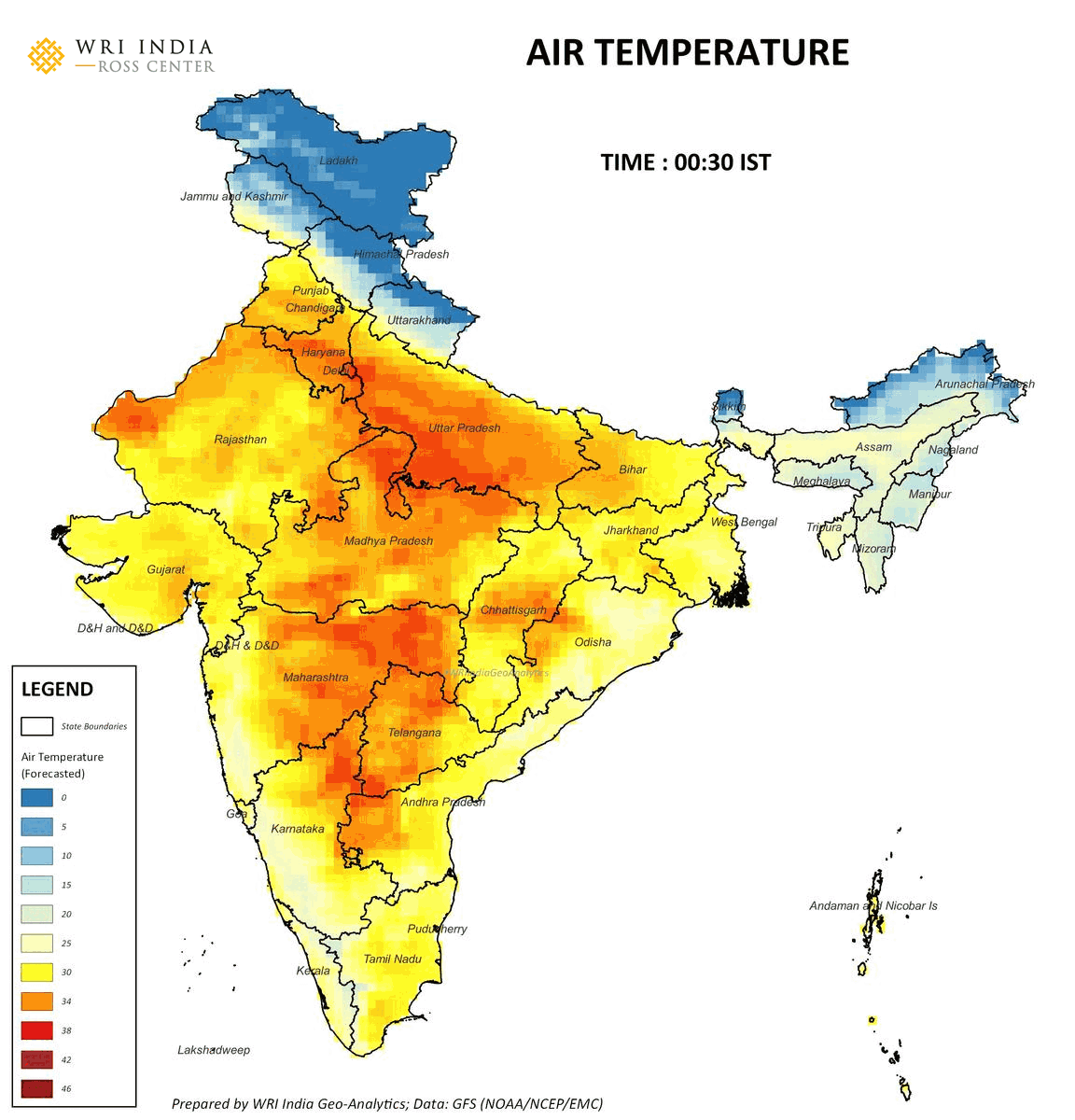
The most common way of reporting heat in India is based on maximum air temperatures. This year around 82 crore people faced 40 degrees C, and 99 crore people faced 38 degrees C on the single day of April 30 alone. These high temperatures did not just impact human health but also affected power consumption patterns.
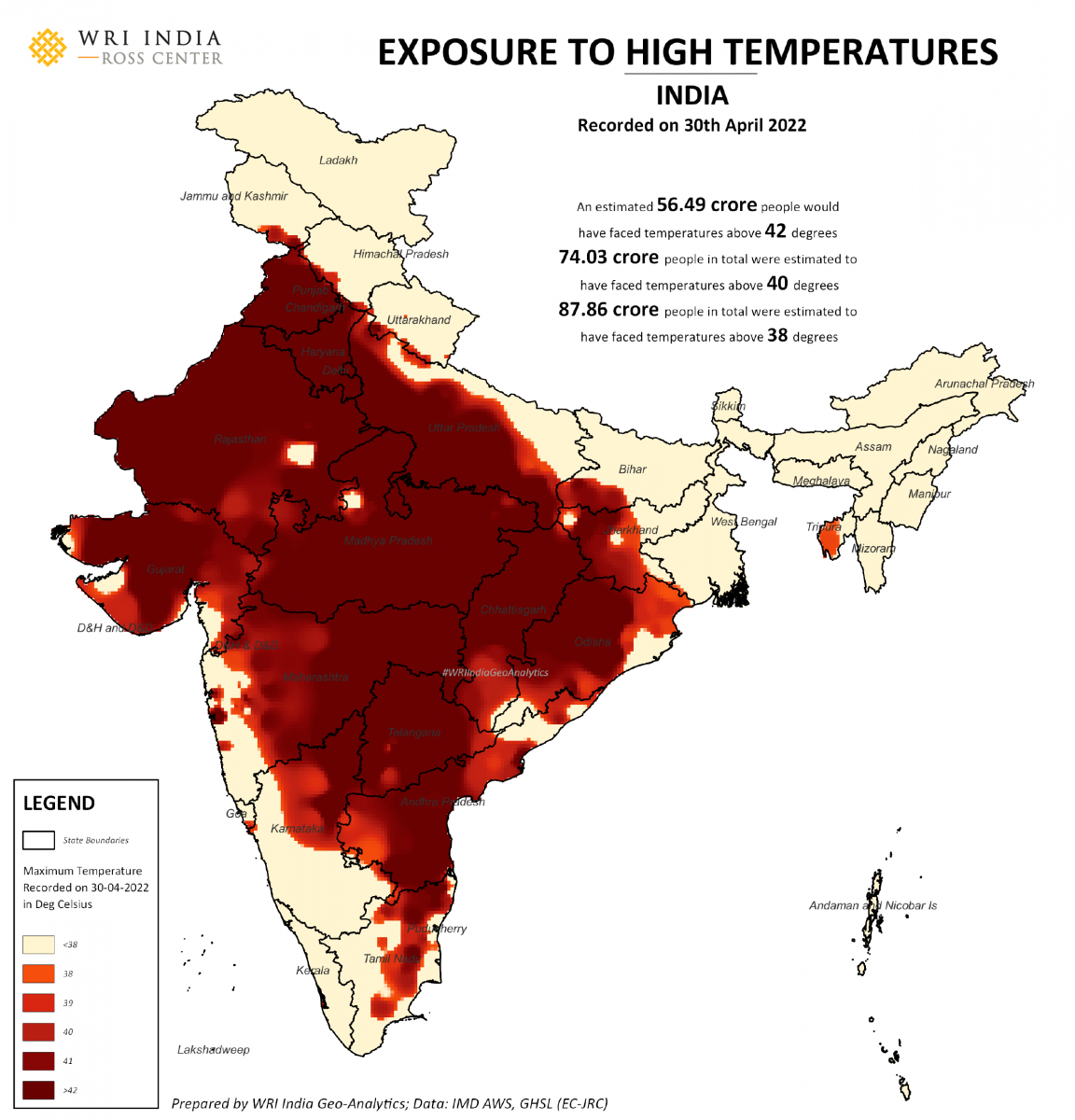
Land Surface Temperature (LST) is derived from satellite observations. And for a specific duration, it provides a wider spatial coverage of heat measurements that differs from the one based on-air temperature at the time of observation. LST is a measure of interaction as it indicates the skin temperature of materials above the Earth’s surface. It could be vegetation, types of roofs, tar or pavement materials, water, etc., and hence is useful in understanding the urban heat island effect. For example, even with similar air temperatures, areas with higher green cover would have lower surface temperatures during daytime as compared to a concrete or tar road.
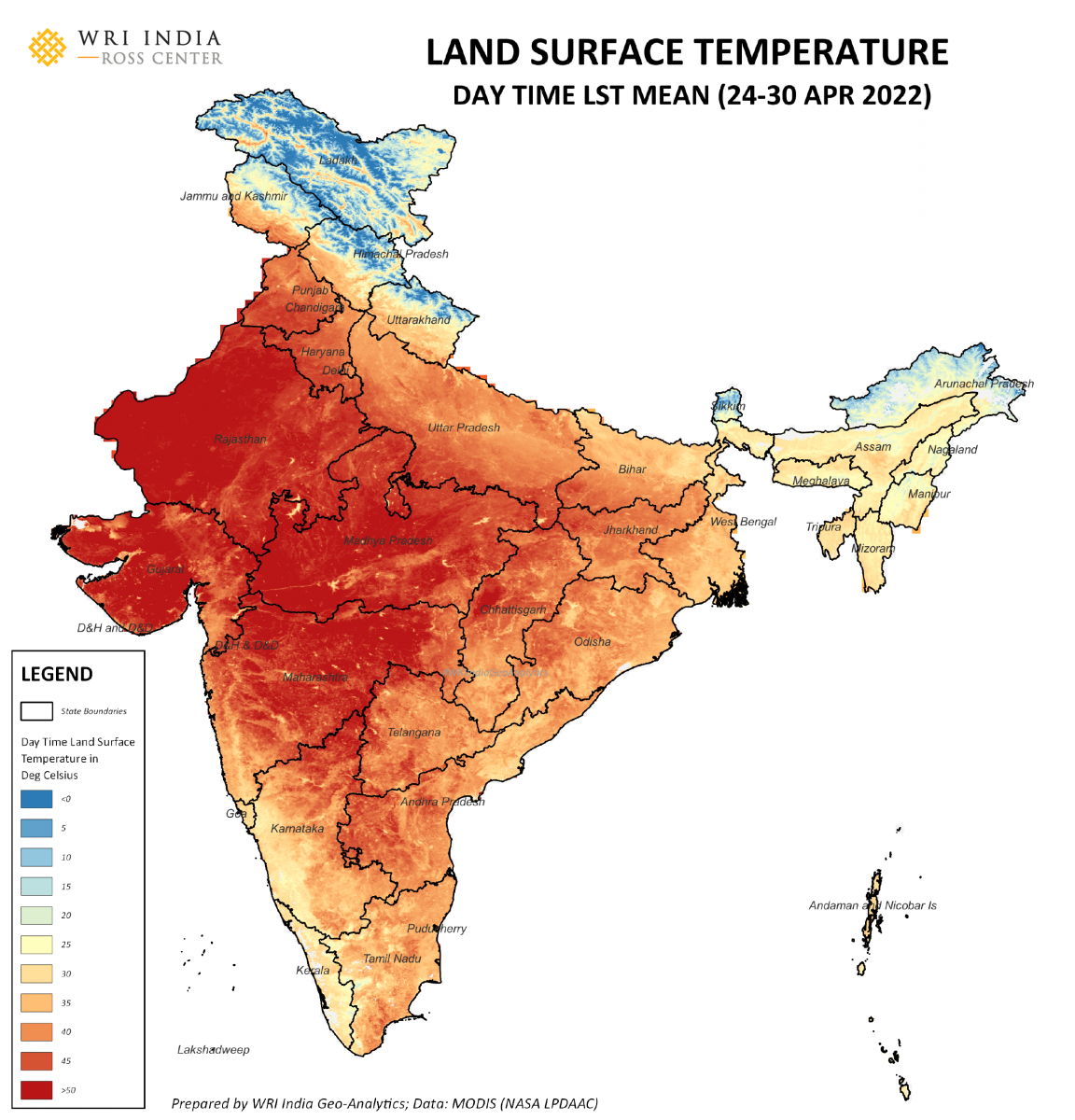
LST measurements depend on the time of the day and help in identifying urban heat pockets. At night, temperatures observed are different because surfaces like buildings, roads, and other urban landforms slowly release the heat absorbed during the day. In the map below, urban centers are visibly hotter because of the urban heat island effect.
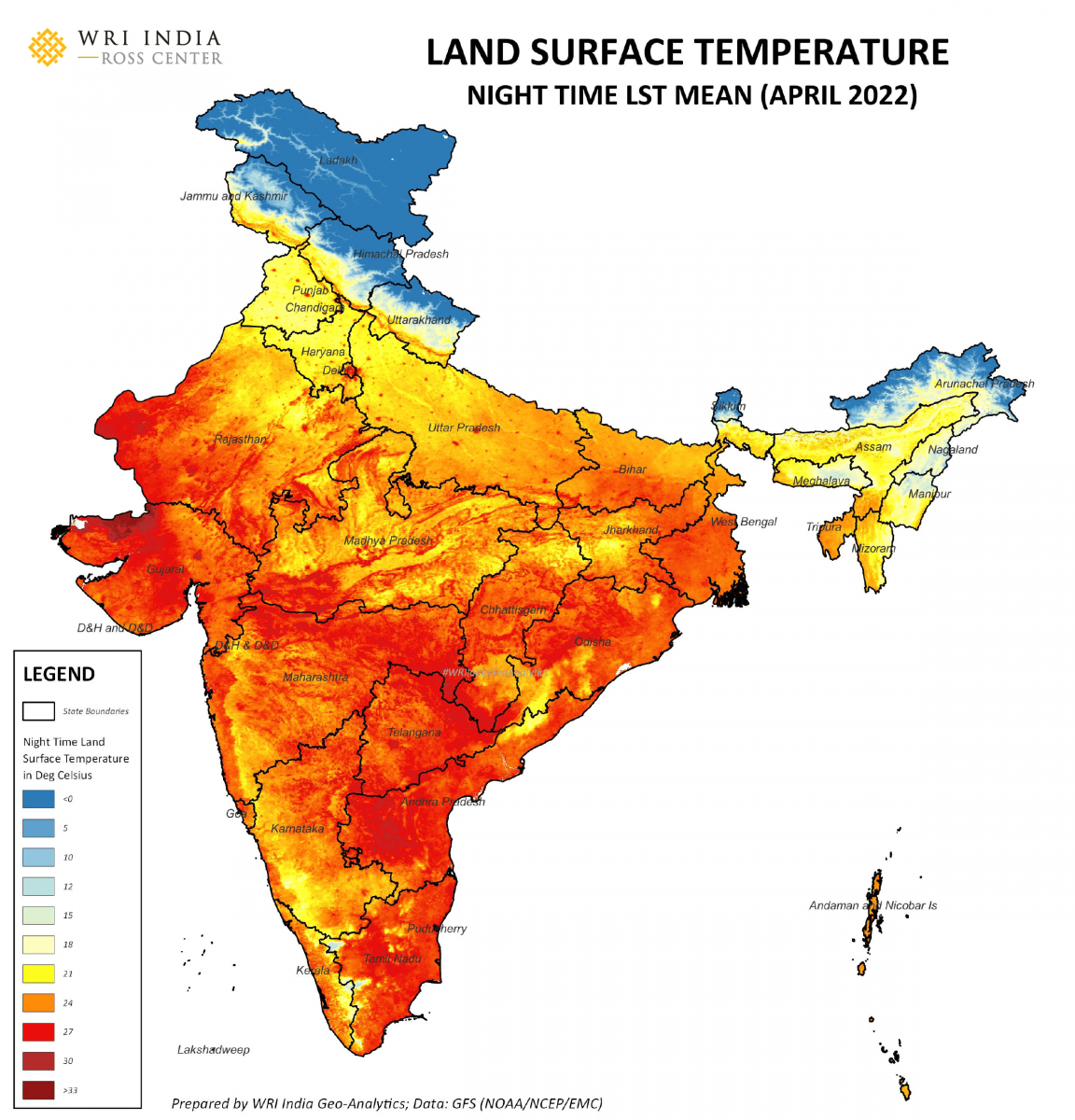
Then there are also anomalies. These are deviation of temperatures from their long-term average and remain critical to understand the effects on meteorologically dependent sectors like agriculture, energy, etc. The term “normal” is used interchangeably with “mean average” in India, leading to a misconception that deviations from mean are not normal. However, it should be noted that anomalies are deviations from average, not deviations from normal even though institutions like India Meteorological Department (IMD) report them in that manner. Hence, anomalies need not necessarily be considered as “abnormal”.
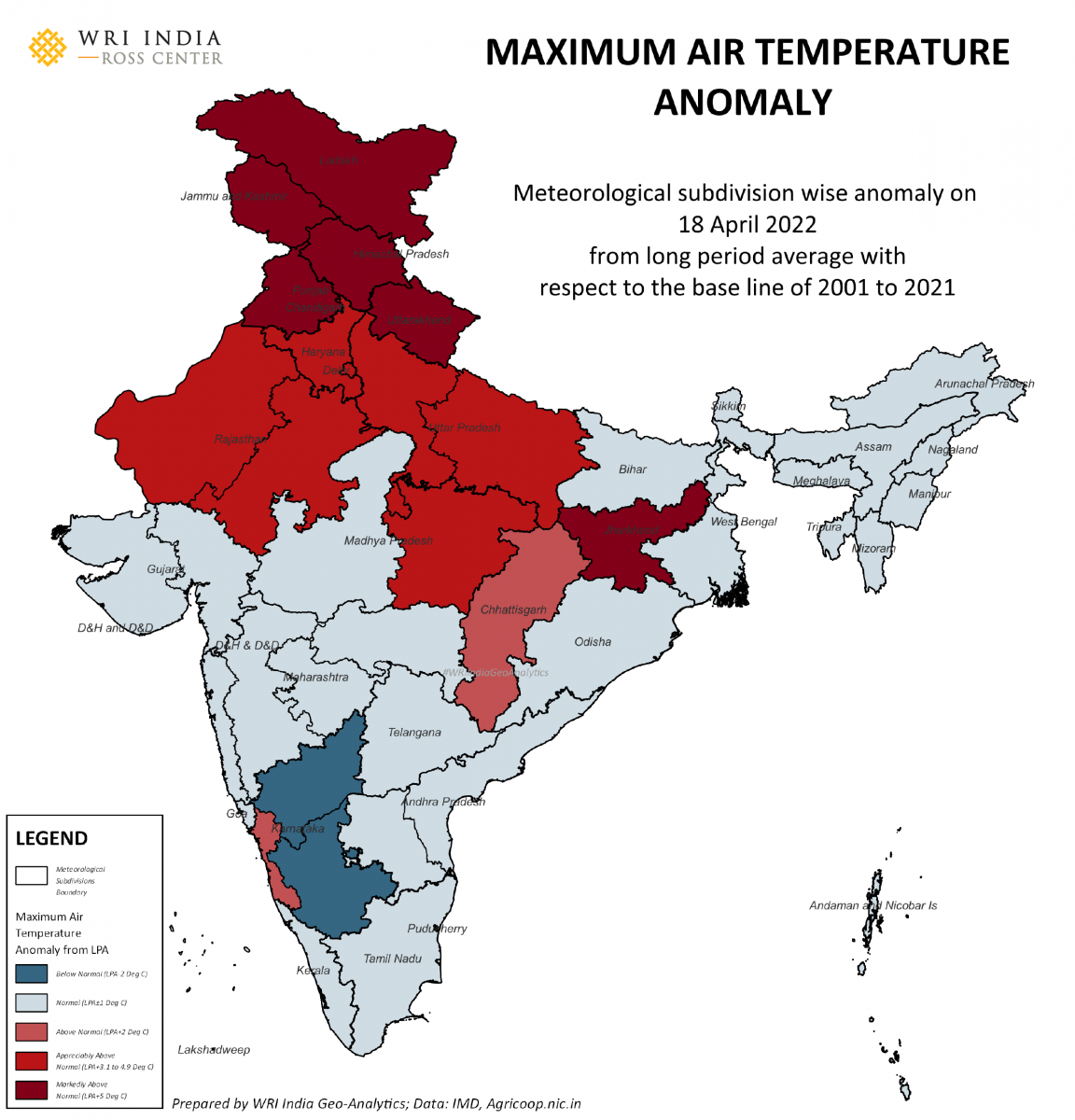
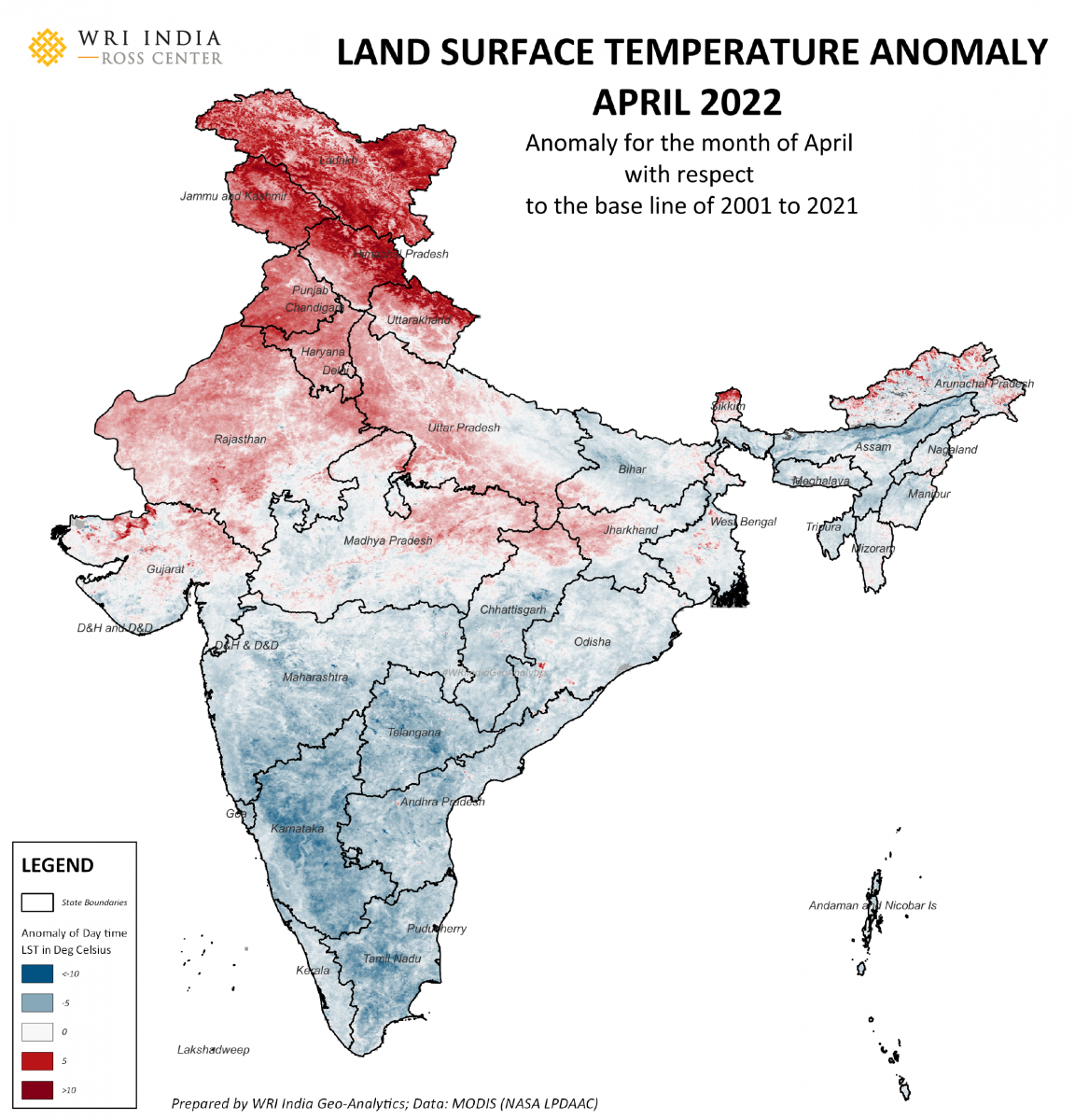
In April this year meteorological subdivisions in Northern India have not only faced temperatures above their long period averages but have also clocked them in a prolonged manner over a month which can have profound impacts.
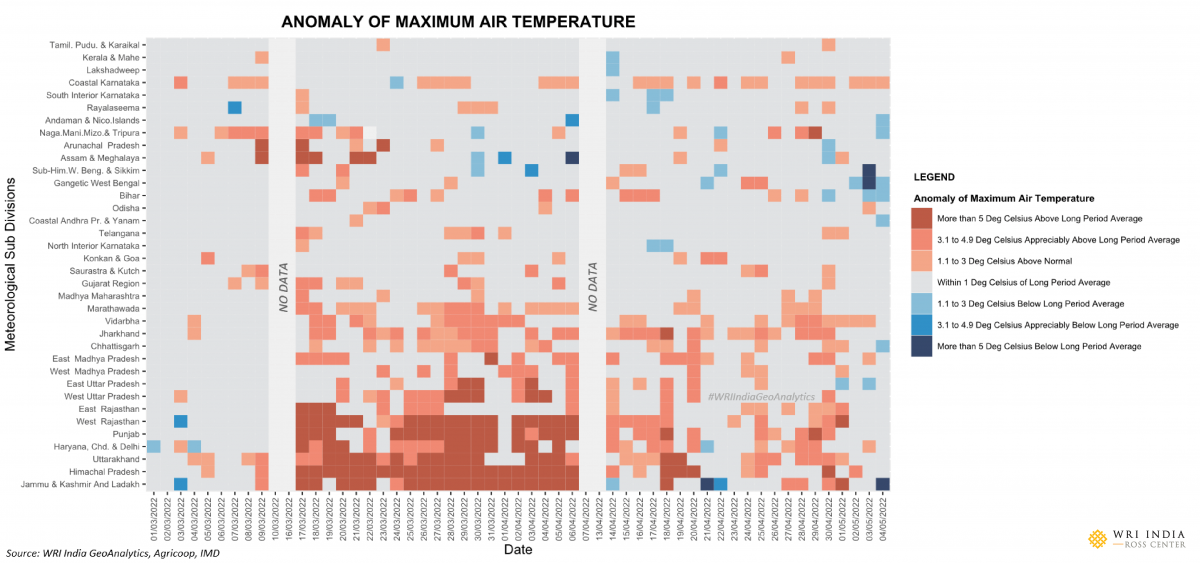
Though air temperatures, surface temperatures, and their anomalies are powerful indicators of heatwaves, they are still insufficient to explain proportion of human discomfort or physical stress. Along with temperature, humidity and other factors play a vital role in human wellbeing. Wet-bulb temperature, on the other hand, takes humidity into account and is defined as the lowest temperature in which air can be cooled by water evaporation at constant pressure. Wet-bulb temperatures are increasingly being used across the world as a measure of thermal discomfort. A forecasted wet-bulb temperature map below shows higher temperatures particularly for Indian coastal regions with higher humidity.
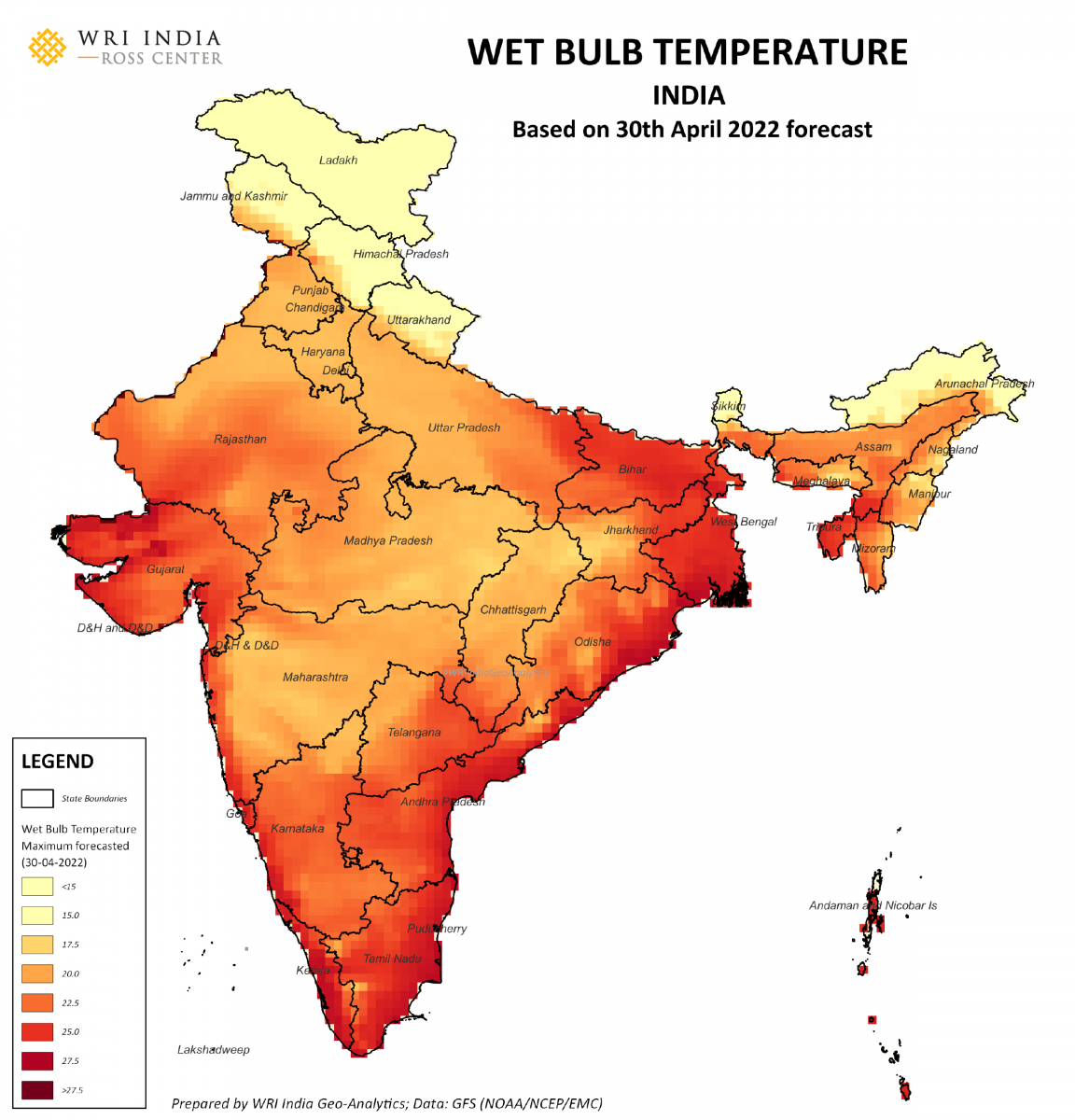
A more robust method of measuring thermal discomfort which works universally is Universal Thermal Climate Index (UTCI). It is a human biometeorology parameter used to assess the linkages between outdoor environment and human well‐being. Data based on European Centre for Medium-Range Weather Forecasts ReAnalysis 5 (ERA5) shown in the map below displays the maximum recorded UTCI. Here we can observe that almost all of India is experiencing some form of heat stress resulting in its widespread impact.
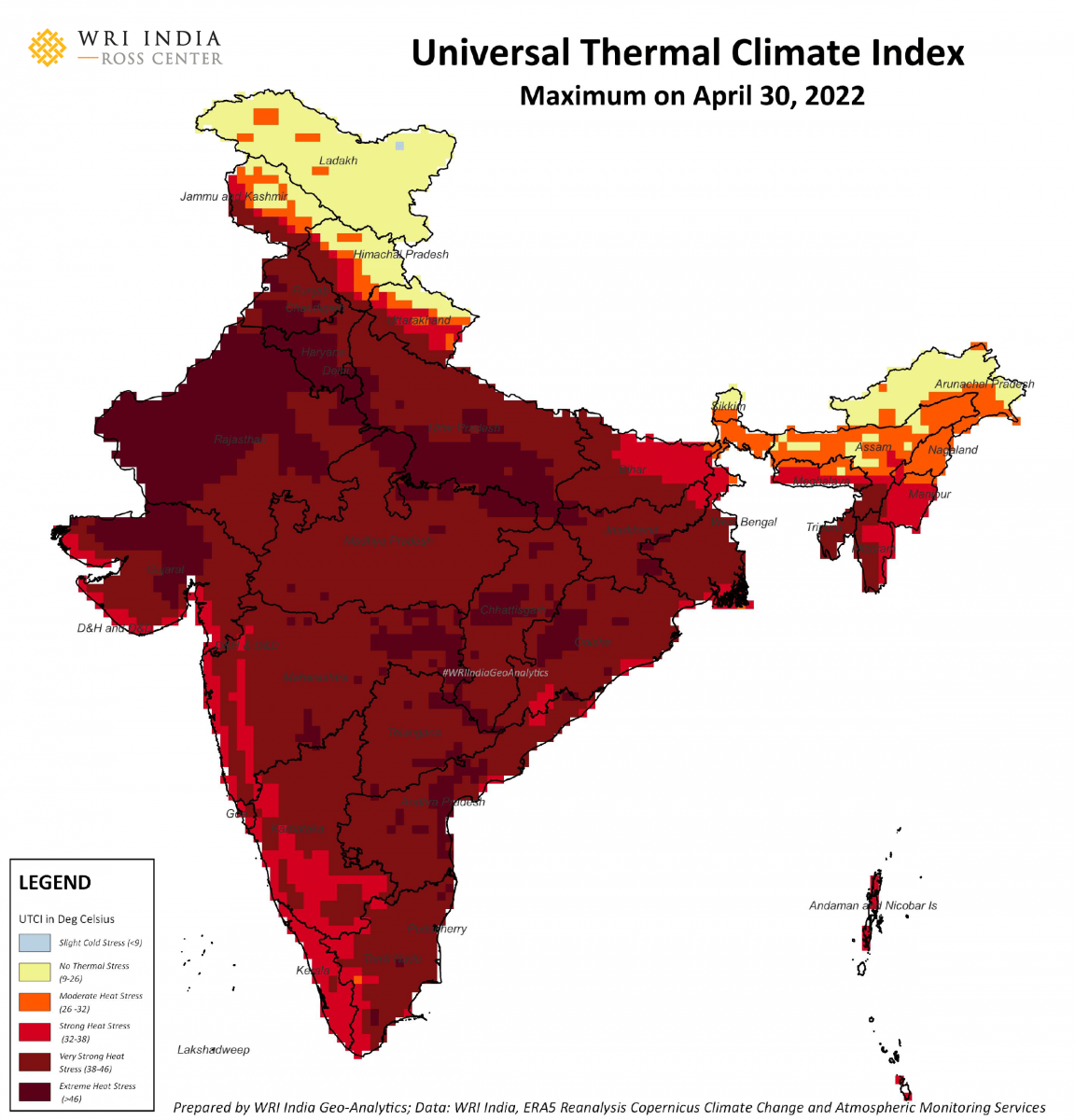
The above measures, indices, and anomalies provide detailed insights into heatwaves and their effects. In addition to these, there is one more dimension which plays a critical role – time. Measures we often use for defining heatwaves are based on maximum numbers recorded in a day. But the duration of exposure to higher temperatures or indices varies from place to place and plays a critical role in quantifying heatwaves. The map below shows the duration of exposure to 40 degrees C in a single day. And it can be seen here that the addition of time as a dimension provides more insights into maps of heat exposure as compared to the previous maximum air temperature maps that show every place to be affected equally.
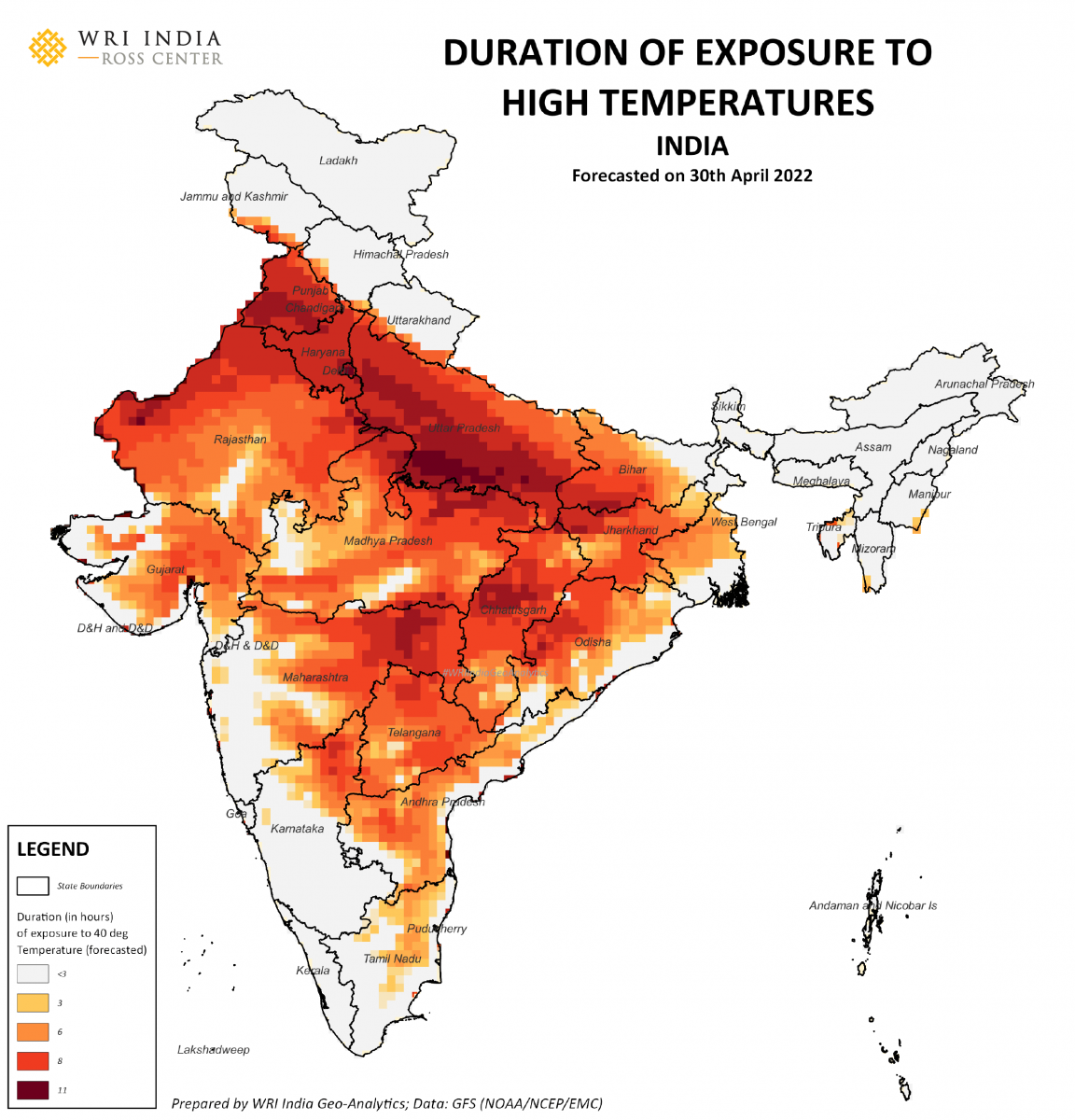
For human beings prolonged exposure to heat over multiple days would be detrimental to their health. The map below shows the duration of exposure to strong heat stress in terms of number of hours spread across a span of 80 days in places in North and Central India. It is estimated from our analysis that 105 crore people faced this high strong heat stress for more than 300 hours, while 132 people crore people faced it for at least one hour in the 80 days.
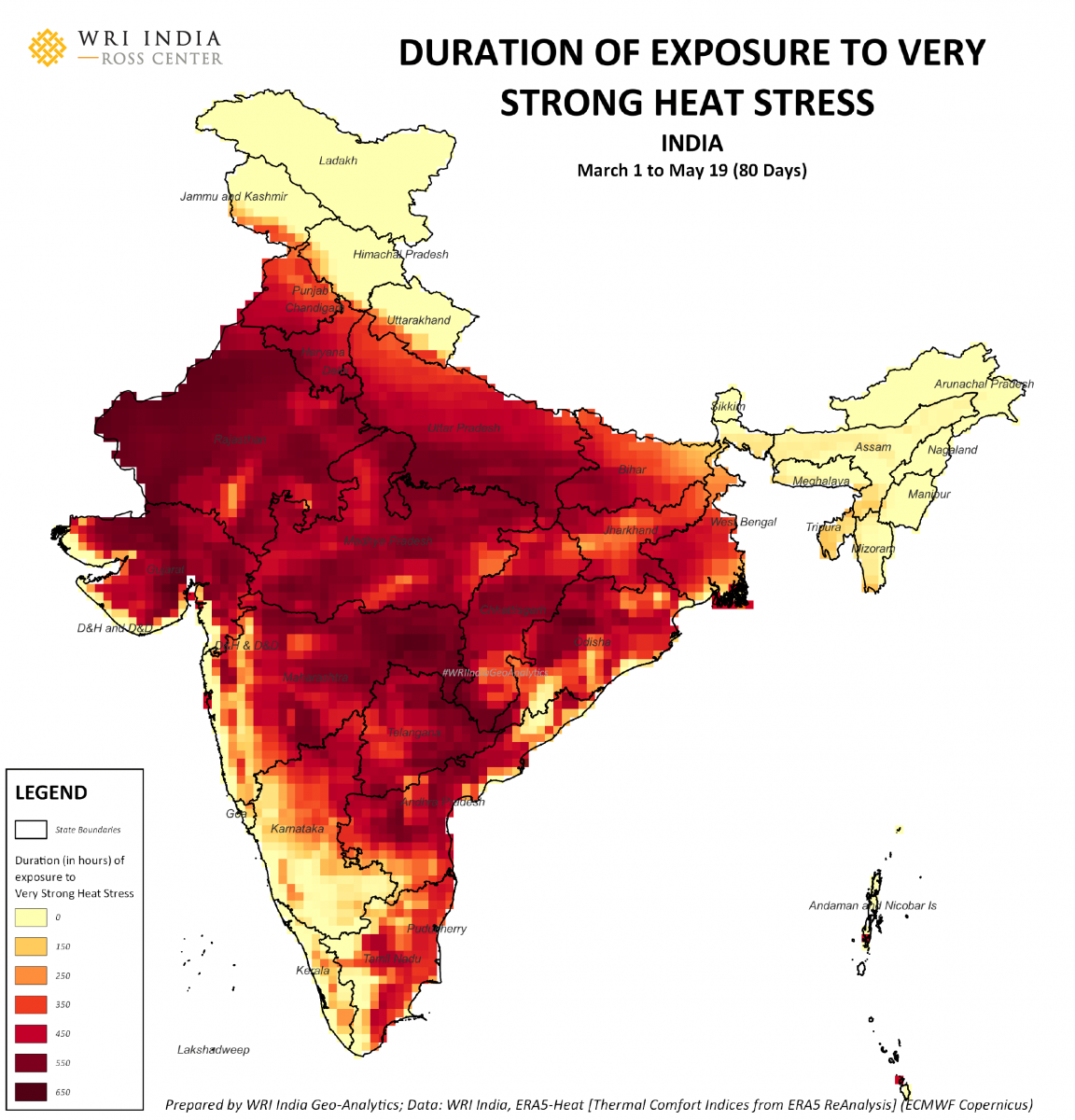
The chart here shows the temporal progression of distribution of daily maximum heat stress in India. Most of the country began experiencing strong and very strong heat stress since March. The entire country remained in high amount of heat stress till the arrival of pre-monsoon thunderstorms and Cyclone Asani in some parts of India. Even after their arrival around 10 May, many regions continued to face acute stress which can be noticed in the spread of bars in the chart.
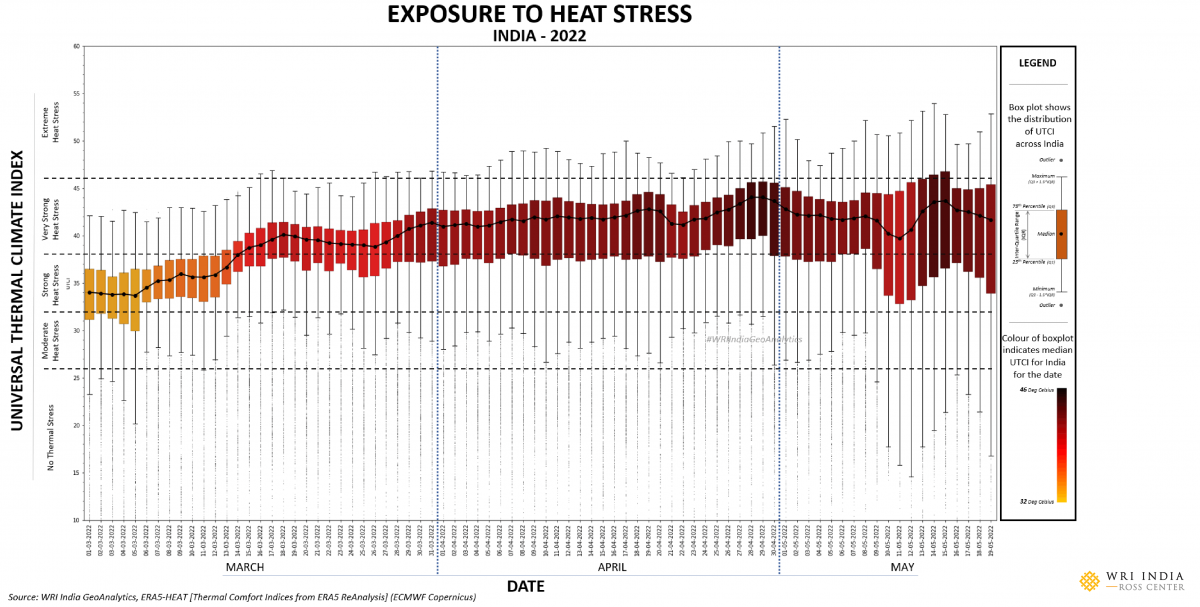
Between the different measures, indices, anomalies and their temporal nature, we get insights about heat waves and their effects on human wellbeing, whether they are related directly to health or the economy. To find the impacts of heatwaves and drive solutions to combat them, we need to have good and reliable data on measures. Though it is possible for us to study large-scale national impacts, it becomes necessary for us to have more spatially and temporally granular weather data for local decision making. This in turn indicates a need to strengthen our automatic weather station networks across the country.
Unlike other natural disasters, heat is silent and hence lacks awareness and recognition among the public. One way to raise awareness is to use names for heatwaves and develop detailed advisories based on indices or combination of indices and measures listed above. Cities like Seville in Spain, for example, have started naming heatwaves this year to bring awareness about their impacts.
An important reason why we need to strengthen methods of measurement is that heatwaves and their effects are differential in nature. As the land surface temperature maps showed, urban areas face higher temperatures than their immediate neighborhoods. Even within urban areas, vegetation is not evenly distributed, urban forms, roofing materials differ. These create wide differences with respect to exposure to heat, and the people’s ability to fight against it is rooted in a range of socio-economic factors.
The effects and recommendations with respect to urban areas would be discussed in the next blog. Read here how extreme weather can reduce productivity and GDP.
Maps and data in the blog were prepared and processed by Raj Bhagat P, Harsha K (Program Associate, GeoAnalytics, WRI India), Jyoti (Program Associate, GeoAnalytics, WRI India).
Views are personal.
